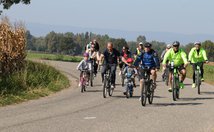Tourism
Overview
Characteristics of cross-border tourism projects
Tourism projects can be carried out at different levels:
- At the level of cross-border bodies and institutions, within which thematic working groups can be set up on the question of tourism (e.g. the Lille-Kortrijk-Tournai Eurometropolis).
- At the local and regional level: local and regional authorities can for example lead projects directly.
- At the level of public or private structures not of a cross-border nature, such as tourism offices, protected natural areas such as national parks, or other bodies, etc. in partnership with other equivalent structures on the other side of the border.
The objective of tourism projects is, generally, to propose cross-border actions capable of encouraging the emergence of a shared cross-border identity.
The development of cross-border tourism therefore involves:
- the creation of shared tools and methods
- concerted spatial planning including that of tourist sites, through the networking of actors
- the joint organisation of promotion and commercialisation
- the use of Information Society tools
- the creation of new tourism products and actions in favour of the training of operators
Aside from the cultural, economic and environmental challenges already addressed, other parameters are important to consider for the viability of a project:
- the different partners need to have a common interest
- the tourism services and products developed as the foundation of the project on either side of the border must be capable of responding to expectations or needs of the population
- the partners leading the project must have the appropriate language skills and professional competencies
Photo : Vélo Gourmand de l'Eurodistrict Strasbourg Ortenau.
Copyright : Isabelle Hipp


